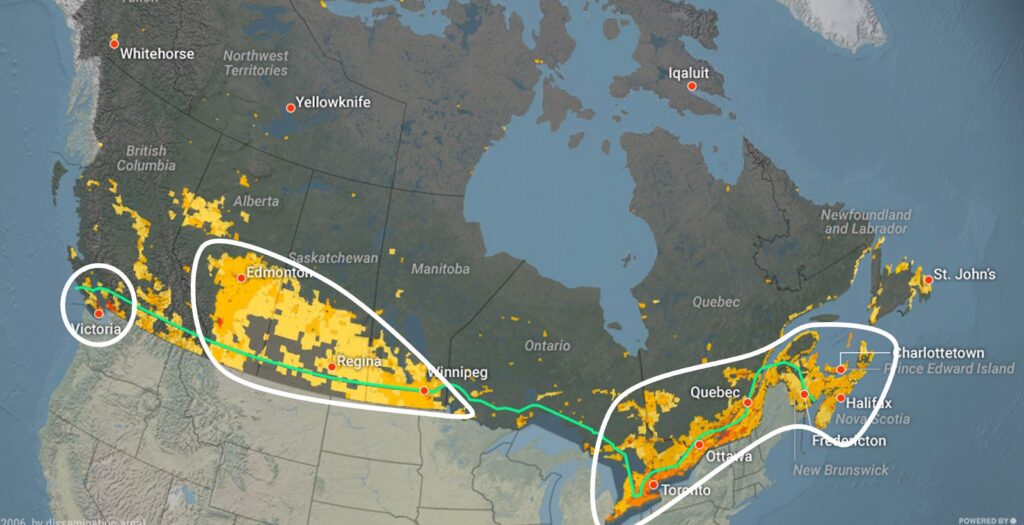Realistic Solutions to the Crisis

If the “red circle” is off-limits for practical and legal reasons, how can Canada address the housing shortage?
A. Urban Densification
- Upzoning low-density areas to allow more multi-unit buildings.
- Incentivizing infill development (building on vacant lots within existing urban areas).
- Relaxing parking minimums and setback requirements to increase buildable space.
B. Utilizing Brownfield Lands
- Redeveloping abandoned industrial sites (brownfields) near city cores.
- These sites often already have infrastructure and are close to jobs and transit.
C. Converting Commercial and Retail Spaces
- Empty office buildings and malls can be converted into residential units.
- Post-COVID remote work has left thousands of square meters of vacant commercial space.
D. Government-Backed Affordable Housing
- Direct public investment in non-market, rent-controlled housing.
- Partnerships with non-profits, co-ops, and Indigenous housing providers.
E. Streamlining the Approval Process
- Provincial mandates to fast-track permits for high-priority housing projects.
- Reducing inter-departmental delays at the municipal level.
Case Studies: Where Building in the “Red Circle” Was Considered (and Failed)
1. Ontario Greenbelt Scandal (2023)
The Ford government tried to remove land from the Greenbelt to allow housing development. After public outrage and investigations, the decision was reversed — demonstrating strong public opposition to building in protected zones.
2. Highway 413 and Sprawl Debates
The proposed Highway 413 through protected lands sparked debates about whether it was a transportation need or a land-grab for future housing sprawl.
3. Langford, BC – Balancing Growth and Nature
Langford has rapidly expanded by carefully planning development while preserving nearby nature. It’s a model for “smart growth” without breaking into protected lands.






